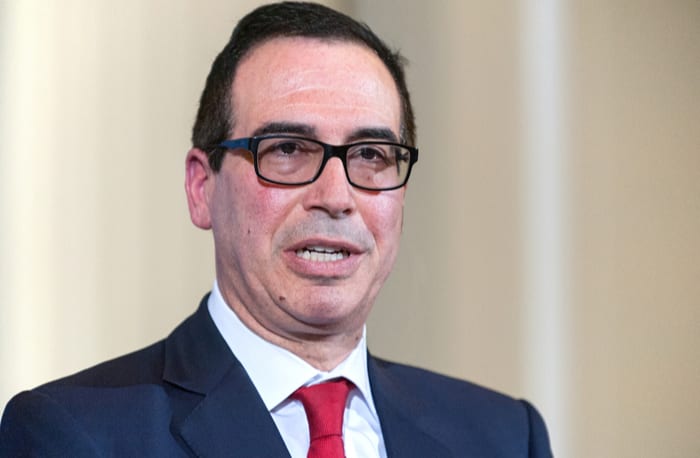Treasury Secretary Warns Of Depression-Like Unemployment Levels

Treasury Secretary Steven Mnuchin said the U.S. unemployment rate could soar to 20 percent if Congress fails to pass a $1 trillion coronavirus stimulus package, according to reports on Tuesday (March 17).
Mnuchin shared the potentially disastrous outlook in a closed-door Tuesday (March 17) meeting with Republican senators, a source told Reuters.
The treasury secretary was aiming to convince Republican lawmakers to pass the bailout package, which includes providing checks to Americans facing financial hardship amid the coronavirus pandemic.
Mnuchin’s spokeswoman, Monica Crowley, said he wasn’t issuing an economic forecast, but instead was just illustrating the potential risks of inaction.
“During the meeting with Senate Republicans today, Secretary Mnuchin used several mathematical examples for illustrative purposes, but he never implied this would be the case,” she said in an emailed statement.
On Capitol Hill, Mnuchin explained the breadth of the proposed stimulus plan.
“This is a very unique situation for this economy. We’ve put a proposal on the table that would inject a trillion dollars into the economy that is on top of the $300 billion from the IRS deferrals,” Mnuchin said.
Mnuchin also said the economic fallout from the coronavirus pandemic could potentially be worse than the 2008 financial crisis.
“If we do this right our country — and the world frankly — but our country but can be rolling again pretty quickly, pretty quickly. We have to fight that invisible enemy that I guess is unknown but we’re getting to know it a lot better,” President Donald Trump on Tuesday said during a televised address about the coronavirus.
The Fed’s warning mirrors a similar stance during the 2008 financial crisis. Unemployment reached a high of 10.2 percent in October 2009. Treasury Secretary Henry Paulson and Federal Reserve Chair Ben Bernanke at the time had asked Congress for a $700 billion plan to buy toxic mortgage assets.
Unemployment was at a 50-year low in October 2019. Wage growth, however, slowed on an annualized basis to 2.9 percent from 3.2 percent.